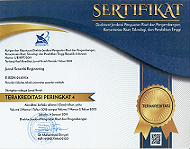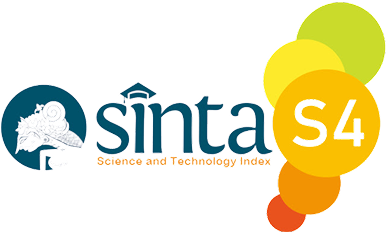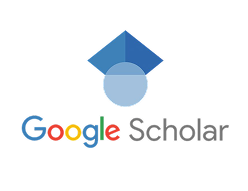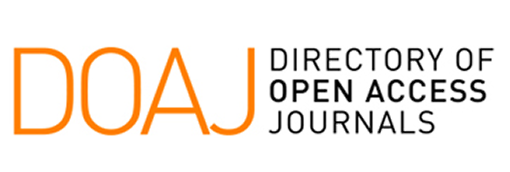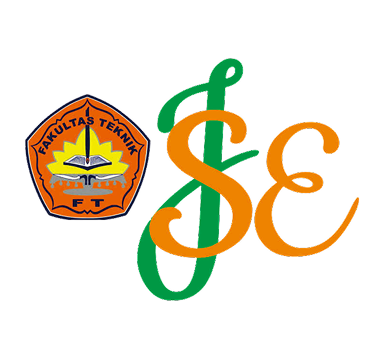Integrasi Inovasi Digital dalam Manajemen Keuangan dan Rantai Pasok Industri Daur Ulang Plastik
Keywords:
Digitalization, SME Finance, Supply Chain, Operational Efficiency, Recycling IndustryAbstract
The integration of digital innovation in the plastic recycling industry has become a strategic step to enhance efficiency, transparency, and competitiveness amid complex waste management challenges. This study employs a literature review approach to examine the potential implementation of digital technologies, including cloud-based financial systems, real-time logistics tracking, and e-wallet applications, to support financial management and distribution processes in the recycling sector. The findings indicate that digitalization has the potential to reduce operational costs by up to 25%, expedite financial reporting, and enhance investor confidence. Nevertheless, challenges persist, including inadequate digital literacy, deficient infrastructure, and resistance to change. The strategic recommendations encompass the provision of fiscal incentives, the implementation of continuous technical training, and the development of data-driven financing ecosystems. Digitalization has the potential to transform the plastic recycling industry by facilitating the transition to a more professional, inclusive, and sustainable system. This transition can be facilitated by collaborative support from government entities, industry leaders, fintech companies, and research institutions.
References
[1] N. Evode, S. A. Qamar, M. Bilal, D. Barceló, and H. M. N. Iqbal, “Plastic waste and its management strategies for environmental sustainability,” Case Stud. Chem. Environ. Eng., vol. 4, p. 100142, 2021.
[2] P. Soemadijo et al., “A Study of Technology Availability For Recycling Low Value Plastic In Indonesia,” J. Environ. Sci. Sustain. Dev., vol. 5, no. 2, pp. 436–457, 2022.
[3] F. Hanum et al., “Strategi Ekspansi Usaha UMKM dengan Pendekatan Metoda Hybrid SWOT Analisis dan AHP,” J. Serambi Eng., vol. VIII, no. 1, pp. 4991–4999, 2023, [Online]. Available: https://ojs.serambimekkah.ac.id/index.php/jse/article/view/5675
[4] S. Ikhbar, N. Nelly, M. Maksalmina, C. Amni, A. Arsyad, and A. A. Fansuri, “Strategi Pengelolaan Operasional untuk Meningkatkan Keuntungan dan Mengurangi Pengeluaran dalam Industri Daur Ulang Plastik,” J. Serambi Eng., vol. 10, no. 1, 2025.
[5] M. Marlina, S. Sufitrayati, S. Amri, N. Syamsuddin, R. Radhiana, and R. M. Akbar, “Inovasi Operasional untuk Efisiensi Biaya dan Peningkatan Profit di Industri Pengolahan Limbah Plastik,” J. Serambi Eng., vol. 10, no. 1, 2025.
[6] I. Jalil, M. Malahayati, S. Yana, H. Heriyana, I. Ilyas, and R. Nengsih, “Optimalisasi Proses Bisnis UMKM Kerajinan Gerabah melalui Sinergi Inovasi Pemasaran dan Manajemen Risiko Terstruktur,” J. Serambi Eng., vol. 10, no. 1, 2025.
[7] M. Maryam, R. Nengsih, T. Makmur, S. Susanti, A. Arsyad, and A. R. Rahmi, “Meningkatkan Profitabilitas UMKM Pengrajin Gerabah dengan Efisiensi Keuangan dan Optimalisasi Produksi,” J. Serambi Eng., vol. 10, no. 1, 2025.
[8] P. Mauliza et al., “Kendala Pemenuhan Suplai dan Permintaan Energi Terbarukan Biomassa Indonesia,” J. Serambi Eng., vol. 8, no. 3, 2023.
[9] C. Rusmina, M. Mawardi, M. Bakri, S. Susanti, R. Radhiana, and C. A. Surayya, “Meningkatkan Daya Saing UMKM melalui Penerapan Just-in-Time dan Teknologi Sederhana,” J. Serambi Eng., vol. 10, no. 1, 2025.
[10] Arsyad, S. Yana, Radhiana, Ulfia, Fitriliana, and Juwita, “Kendala Teknologi, Pendanaan dan Ketersediaan Bahan Baku Biomassa dalam Pengembangan Energi Terbarukan,” J. Serambi Eng., vol. 8, no. 1, pp. 4940–4946, 2023.
[11] D. Corrales-Garay, M. Ortiz-de-Urbina-Criado, and E.-M. Mora-Valentín, “Understanding open data business models from innovation and knowledge management perspectives,” Bus. Process Manag. J., vol. 28, no. 2, pp. 532–554, 2022.
[12] T. A. Kurniawan, A. Maiurova, M. Kustikova, E. Bykovskaia, M. H. D. Othman, and H. H. Goh, “Accelerating sustainability transition in St. Petersburg (Russia) through digitalization-based circular economy in waste recycling industry: A strategy to promote carbon neutrality in era of Industry 4.0,” J. Clean. Prod., vol. 363, p. 132452, 2022.
[13] R. Radhiana, M. Mukhdasir, J. Surya, N. Syamsuddin, M. Maryam, and A. Syafitri, “Pengaruh Sistem Produksi Lean terhadap Pengurangan Biaya Produksi dan Peningkatan Profitabilitas di Industri Pengolahan Limbah Plastik,” J. Serambi Eng., vol. 10, no. 1, 2025.
[14] Kementerian Perencanaan Pembangunan Nasional/ Badan Perencanaan Pembangunan Nasional, “Peta Jalan Sustainable Development Goals (SDGs) di Indonesia,” Kementeri. PPN/Bappenas, p. 35, 2021, [Online]. Available: https://sdgs.bappenas.go.id/website/wp-content/uploads/2021/02/Roadmap_Bahasa-Indonesia_File-Upload.pdf
[15] T. Baumgartner, Y. Malik, and A. Padhi, “Reimagining industrial supply chains,” McKinsey & Company. https://www. mckinsey. com/industries/advance d-electronics/our-insights/reimagining-industrial-supply-chains, 2020.
[16] J. Tidd and J. R. Bessant, Managing innovation: integrating technological, market and organizational change. John Wiley & Sons, 2020.
[17] M. T. Adesina, T. D. Babayemi, and J. M. Adesina, “Enhancing financial efficiency: ERP applications in the banking sector,” Int. J. Sci. Res. Arch., vol. 12, no. 2, 2024.
[18] U. Ulfia, R. Rahmi, Z. Yusuf, R. Radhiana, M. Mukhdasir, and A. Humaira, “Strategi Pemilihan Bahan Baku Daur Ulang untuk Meningkatkan Profitabilitas di Industri Pengolahan Limbah Plastik,” J. Serambi Eng., vol. 10, no. 1, 2025.
[19] N. Syamsuddin, S. Yana, N. Nelly, and ..., “Permintaan Pasar untuk Produk dan Layanan Energi Terbarukan (Perspektif Daya Saing Energi Terbarukan Indonesia),” J. Serambi Eng., vol. VIII, no. 1, pp. 4965–4977, 2023, [Online]. Available: https://ojs.serambimekkah.ac.id/jse/article/view/5673%0Ahttps://ojs.serambimekkah.ac.id/jse/article/download/5673/4156
[20] A. G. A. O. M. Litter, “From Pollution To Solution,” 2021.
[21] Pusdatin Menlhk, “Kementerian Lingkungan Hidup dan Kehutanan Republik Indonesia Organisasi,” Menlhk.Go.Id, p. 1, 2022, [Online]. Available: https://www.menlhk.go.id/profile/organization/
[22] K. D. Yuliesti, “Suripin, dan Sudarno.(2020). Strategi Pengembangan Pengelolaan Rantai Pasok dalam Pengolahan Sampah Plastik,” J. Ilmu Lingkungan. Progr. Stud. Ilmu Lingkung. Sekol. Pascasarj. UNDIP, vol. 18, no. 1, pp. 126–132, 2020.
[23] H. Suryana, “Model Jaringan Distribusi Dalam Sistem Reverse Logistics Daur Ulang Sampah Plastik Di Jabodetabek,” 2018.
[24] M.-S. Jameaba, “Digitization revolution, FinTech disruption, and financial stability: Using the case of Indonesian banking ecosystem to highlight wide-ranging digitization opportunities and major challenges,” FinTech Disruption, Financ. Stab. Using Case Indones. Bank. Ecosyst. to highlight wide-ranging Digit. Oppor. major challenges (July 16 2, 2020), 2020.
[25] A. M. Pagano and M. Liotine, Technology in supply chain management and logistics: Current practice and future applications. Elsevier, 2019.
[26] F. Fitriliana et al., “Peluang Investasi dan Pengembangan Energi Biomassa: Perspektif Pemanfaatan dan Daya Saing Pengembangannya,” J. Serambi Eng., vol. 8, no. 3, 2023, doi: 10.32672/jse.v8i3.6505.
[27] Independent Evaluation Group (IEG), “Transitioning to a Circular Economy: An Evaluation of the World Bank Group’s Support for Municipal Solid Waste Management (2010–20),” World Bank Gr., pp. 1–149, 2022, [Online]. Available: https://ieg.worldbankgroup.org/evaluations/transitioning-circular-economy
[28] A. Siddika and A. Sarwar, “Socio and macroeconomic determinants of mobile money adoption: a cross-cultural study of selected MENA and Sub-Saharan countries,” Digit. Policy, Regul. Gov., vol. 26, no. 5, pp. 526–544, 2024.
[29] C. Angevine, J. Keomany, J. Thomsen, and R. Zemmel, “Implementing a digital transformation at industrial companies,” McKinsey Co., 2021.
[30] I. Deganis, P. Z. Haghian, M. Tagashira, and A. Alberti, “Leveraging digital technologies for social inclusion,” United Nations Dep. Econ. Soc. Aff., 2021.
[31] S. Wagg and B. Simeonova, “A policy-level perspective to tackle rural digital inclusion,” Inf. Technol. People, vol. 35, no. 7, pp. 1884–1911, 2022.
[32] I. Citaristi, “United Nations Industrial Development Organization—Unido,” Eur. Dir. Int. Organ. 2022, pp. 375–378, 2022.
[33] J. Widodo, “Rencana Pembangunan Jangka Menengah Nasional,” Peratur. Pres. Republik Indones. Nomor 18 Tahun 2020, pp. 2020–2024, 2020
Downloads
Published
Issue
Section
License
Copyright (c) 2025 Mahdi, Jen Surya, Rahmi, Ijal Fahmi (Author); Nadia Shakira (Translator)

This work is licensed under a Creative Commons Attribution 4.0 International License.

